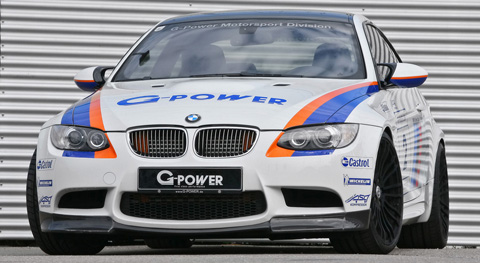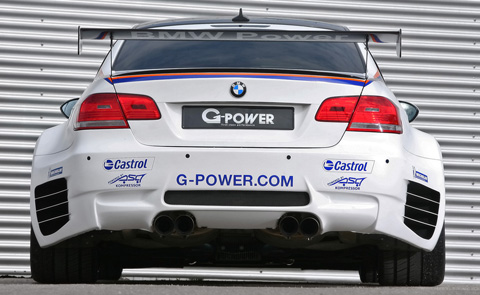Performance wise, both modified BMWs rely on the same SK II S supercharged V8 engine. This engine produces 600 horsepower at 7800 rpm, and 580 Nm of torque at 5300 rpm. Both vehicles clock in at a top speed of 320 Km/h, or 205 mph, through a 6-speed manual transmission.

There are slight differences for the acceleration values of both vehicles. The BMW M3 Tornado CS accelerates from 0 to 100 km/h in 4.3 seconds, while the BMW M3 GT2 S accelerates from 0 to 100 km/h in 4.1 seconds. The M3 Tornado CS can accelerate from 0 to 200 in 11.8 seconds.
Looking at the body work, the GT2 S is equipped with a carbon fiber body kit. The front, rear and side skirts along with all four fenders covering the front and rear wheels are modified and replace and changed into carbon fiber parts to reduce the overall weight of the car. Additionally, a front and rear mounted carbon fiber spoiler improves the vehicle’s aerodynamic potential. On the other hand, a hood mounted carbon spoiler and a rear carbon diffuser on the M3 Tornado CS compensate for the spoilers equipped on the GT2 S, helping the M3 Tornado CS achieve greater down-force.

There is also a difference in the rims and tires equipped between the two BMWs. G-Power decided to use forged Silverstone Clubsport alloy rims on the Tornado CS, measuring 9x20 inches in the front and 10.5x20 inches in the rear. For the GT2 S, G-Power went along with using Silverstone RS forged rims with measurements of 9x20 inches for the front and 11.5x20 inches for the rear. The Tornado CS uses a set of Michelin Pilot Sport tires, while the GT2 S is equipped with Michelin Pilot Sport Cup tires.

There are slight differences for the acceleration values of both vehicles. The BMW M3 Tornado CS accelerates from 0 to 100 km/h in 4.3 seconds, while the BMW M3 GT2 S accelerates from 0 to 100 km/h in 4.1 seconds. The M3 Tornado CS can accelerate from 0 to 200 in 11.8 seconds.
Looking at the body work, the GT2 S is equipped with a carbon fiber body kit. The front, rear and side skirts along with all four fenders covering the front and rear wheels are modified and replace and changed into carbon fiber parts to reduce the overall weight of the car. Additionally, a front and rear mounted carbon fiber spoiler improves the vehicle’s aerodynamic potential. On the other hand, a hood mounted carbon spoiler and a rear carbon diffuser on the M3 Tornado CS compensate for the spoilers equipped on the GT2 S, helping the M3 Tornado CS achieve greater down-force.

There is also a difference in the rims and tires equipped between the two BMWs. G-Power decided to use forged Silverstone Clubsport alloy rims on the Tornado CS, measuring 9x20 inches in the front and 10.5x20 inches in the rear. For the GT2 S, G-Power went along with using Silverstone RS forged rims with measurements of 9x20 inches for the front and 11.5x20 inches for the rear. The Tornado CS uses a set of Michelin Pilot Sport tires, while the GT2 S is equipped with Michelin Pilot Sport Cup tires.
No comments:
Post a Comment